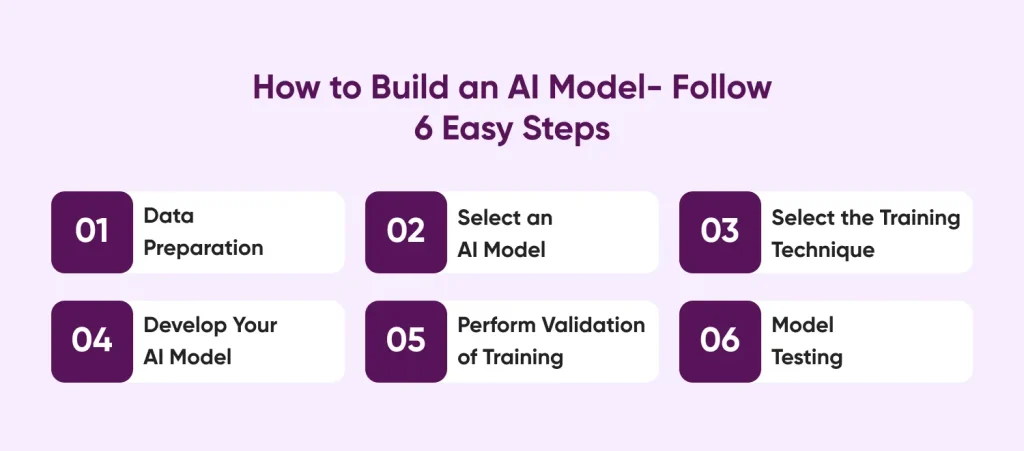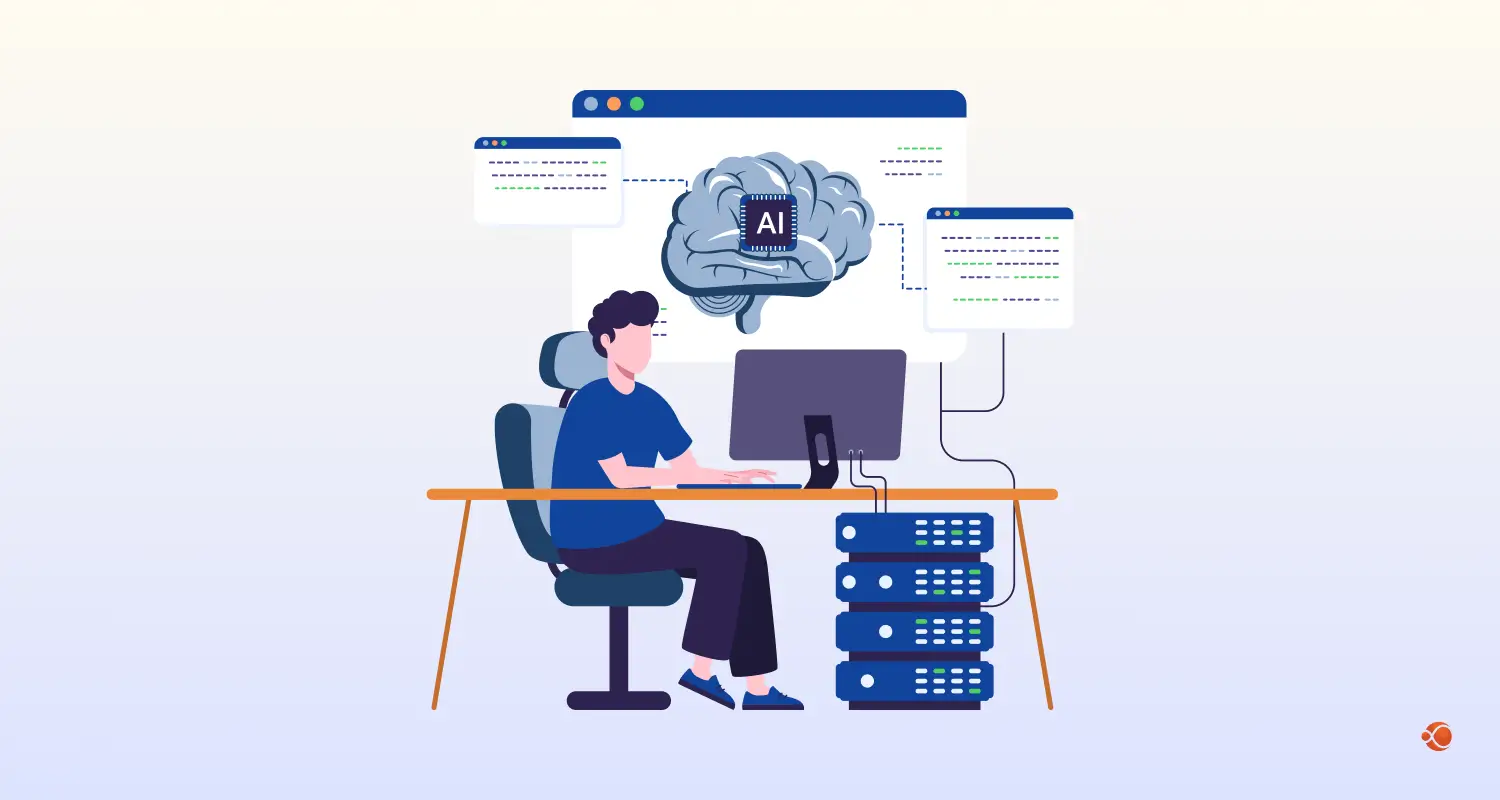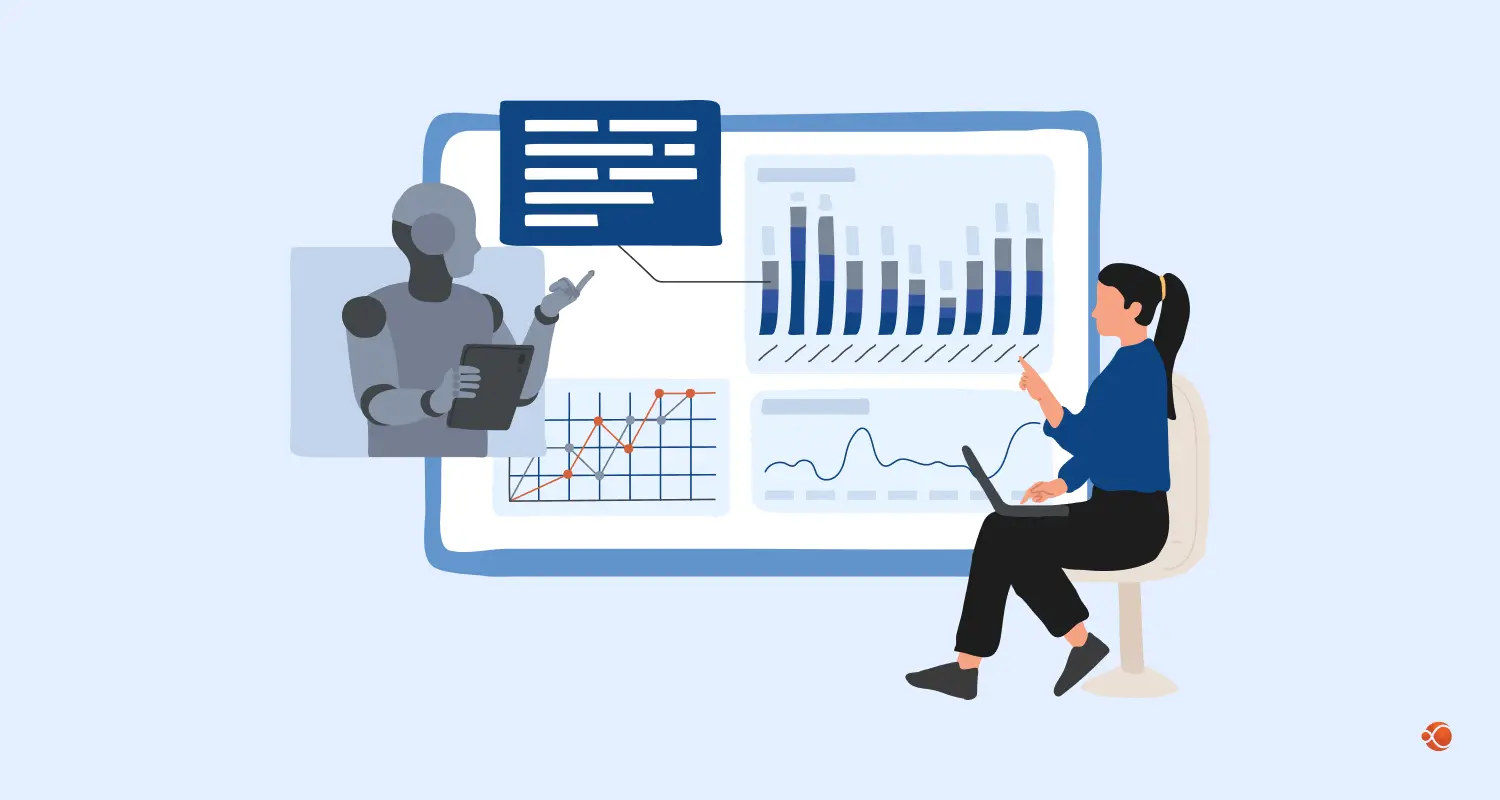Today, the world is adopting AI in the digital transformation of its businesses, be it in any industry. The effect of training AI models is more important for the foundation of many sectors, including healthcare, education, and more. They enable us to solve challenging issues and produce precise forecasts.
For this reason, it is now crucial to comprehend the complexities involved in AI training methods. If you want an AI model to make accurate decisions, you should learn how to train it with the right patterns and data.
Trained AI models can automate processes, and provide customized suggestions that even humans cannot discover. You may create dependable AI systems by adopting best practices in model training, understanding how to train an AI model, and being aware of the obstacles to expect.
Train AI Models Online- An Overview
In essence, AI programming languages or AI algorithms are created to find patterns in datasets. When presented with fresh data, these patterns allow the model to infer conclusions and forecast outcomes.
Complex problems that would be impossible for the human brain to handle manually are expertly solved by AI models. If you feed prominent data to the AI model, the more accurate information you will receive.
To build smarter enterprises with AI, training an AI model that teaches AI systems to analyze, and conclude the data is the essential element for a successful comprehension of AI integration. Three essential elements are necessary for successful AI training: a strong computer infrastructure, a well-designed AI model, and an abundance of precise and high-quality data annotation.
How to Build Train AI Model- Follow 6 Easy Steps
Six sequential steps are involved in training an AI model to make sure it is accurate, well-designed, and prepared for practical use.

Data Preparation
to start with training an AI model, you must prepare your data. Clean the data, gather the information, and process the way you want to use it. There are multiple ways to extract the data like scraping, open-source data collection, and more that help in AI performance. Choosing the right technique will impact the quality of the performance. Each technique is briefly summarized in the following table:
These techniques are vital to data preparation because they supply the varied and pertinent datasets needed to train AI models.
- Sensor Data Collection: Gathers information from gadgets such as GPS, cameras, and Internet of Things sensors. It is used to train predictive maintenance models in manufacturing and industrial organizations.
- Web scraping: Structured data from webpages is extracted by automated programs. E-commerce businesses use it to analyze competitors using pricing and product information.
- Crowdsourcing: Using online platforms, data is gathered from a sizable population. Sentiment analysis on social media sites.
- Open-Source Data Collection: Makes use of datasets that are accessible to the general population. It is employed by research organizations to train models for image recognition.
- In-house Data Collection: Collecting information from internal systems, surveys, and experiments is known as “in-house data collection.” It is employed by software businesses to create proprietary tools.
- Synthetic Data Generation: Produces artificial data through simulations and algorithms. AI algorithms are developed and tested by healthcare institutions, particularly for medical diagnosis and treatment planning.
Select an AI Model
Selecting the method or design that best addresses the ultimate problem is the next stage. Various AI models include support vector machines and deep learning models. While selecting the optimal AI model, you should consider the factors like:
- The problem and its intricacy.
- The extent and organization of the data at hand.
- The necessary degree of precision.
- The computational resources at hand.
For example, photo categorization may be a suitable fit for a convolutional neural network (CNN). For the discovery of outliers in a dataset, an anomaly object detection technique turns out to be a better choice.
Select the Training Technique
To maximize the performance of your AI models, selecting the best learning method entails assessing all the same criteria as in the model selection process. AI training can use the following learning techniques:
- When the link between the input and target variables is known, supervised learning—which relies on labeled data with inputs paired with desired outputs—is perfect for detecting credit card fraud or classifying medical imaging.
- Unsupervised learning groups clients according to commonalities without predetermined labels, which is helpful for customer segmentation. It works with unlabeled datasets to uncover underlying patterns and structures.
- Semi-learning is used in conditions like labeled data as it combines both supervised and unsupervised learning to make both labeled and unlabeled data improve its functionality with precision.
Develop Your AI Model
Enter the data you have prepared into the model to find mistakes and make changes to improve accuracy. It’s crucial to watch out for overfitting during this stage, which happens when your AI model performs well on the training data due to memory rather than learning, which results in the unsuccessful interpretation of fresh, unseen data.
Perform Validation of Training
After completing the initial training phase, move on to the validation step. A new dataset, referred to as the validation dataset, will be used throughout the validation period to verify your theories regarding the performance of the machine learning model.
You should carefully review the results of the new dataset to identify any errors. At this stage, any gaps or unknown factors—including the overfitting problem will become visible.
Consider the case of an NLP model. Consider that you are attempting to develop a model that can distinguish between favorable and bad movie reviews. We test the model using the validation set, which is made up entirely of fresh data, during the validation process. The model’s performance can be assessed using standards like accuracy, precision, and recall.

Model Testing
Testing is the key step in the training of an AI model to evaluate the AI model’s performance on a real-world dataset sometimes known as a test set. The model can be used if it produces accurate results. The model must go through the training phase once more if it fails to deliver the desired accuracy.
A summary of how to test a model in practice is provided below:
- Preparing the data as Treat the test set in the same manner as you would the training set.
- Test the mode by using the test data and the trained model.
- Examine the model’s predictions about the actual values to compare the outcomes.
- Determine pertinent performance measures by analyzing them.
- Examine instances in which the model failed.
- Comparing to other models or baselines is known as benchmarking.
- For future reference, keep a record of test outcomes and lessons learned.
What are the Challenges in AI Model Development Training
Numerous obstacles must be overcome throughout the training process of an AI model, which could compromise its efficacy and dependability. Every step of the AI model training process has its own set of challenges, from acquiring and preserving data quality to dealing with infrastructure requirements and expertise shortages.
Acquiring and preserving enough high-quality data is challenging since huge datasets that accurately reflect the problem domain are necessary. Furthermore, preprocessing and data cleansing, which are essential for consistency, might take a lot of time.
Understanding how AI models make judgments gets harder as they get more sophisticated, particularly in delicate fields like healthcare and finance. It is challenging to develop techniques for tracking forecasts and interpreting results. However, if you hire dedicated developers from CMARIX, these challenges can be solved seamlessly.
Conclusion
An essential part of creating a successful AI system is learning how to train an AI model. Your models will perform accurately in practical applications if you adhere to a systematic approach that involves data preparation, model and technique selection, training, validation, and testing. Maintaining the integrity of an AI model requires overcoming obstacles like infrastructure constraints, privacy concerns, and data quality.
The capability of your model is increased by putting comprehensive validation, continuous improvement, and other best practices into effect. You may create strong AI systems that add substantial value across a range of areas and result in influential AI solutions by carefully following each phase of AI model training.
In addition to offering AI model training services, CMARIX, an AI software development company, also offers business consulting for AI models. From developing an AI and machine learning strategy to launching a solution to address your unique issues, we provide a comprehensive AI consulting service.
Frequently Asked Questions
How to train an AI model?
To train your AI model you need to follow a few simple steps like preparing the data and gathering information with the help of common methods like open-source, crowdsourcing, etc. Then select the AI model and choose the right training technique. Once your AI model is trained, go for training and validating the model followed by testing as your final step.
What is the duration to train an AI model?
Creating a training AI model can vary greatly, from a few hours to several weeks. An AI model’s training time is directly impacted by several factors, including the task at hand, computational resources, dataset size, and model complexity.
Is an AI model for beginners- how to create one?
Begin with having a firm understanding of computer science and a command of a programming language, ideally Python. Learn the fundamentals of algorithms, machine learning, and data science after that. Use AI projects to put theoretical knowledge into practice.
How much does it cost to train an AI model?
The cost depends on the needs of your business and the complexities integrated into the AI model. However, you can also train AI models for money by offering a lot of services as an agency or a budding startup.







